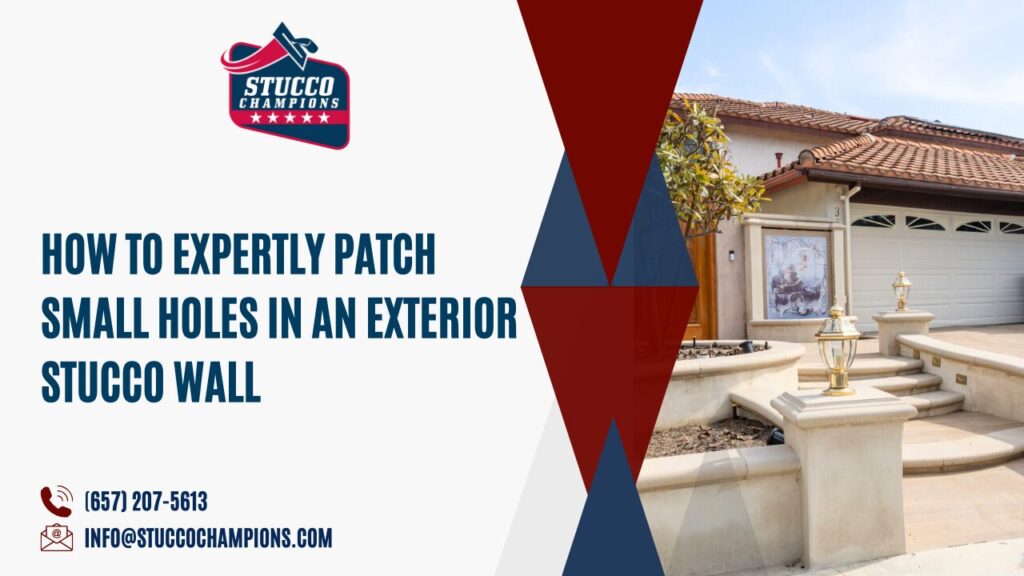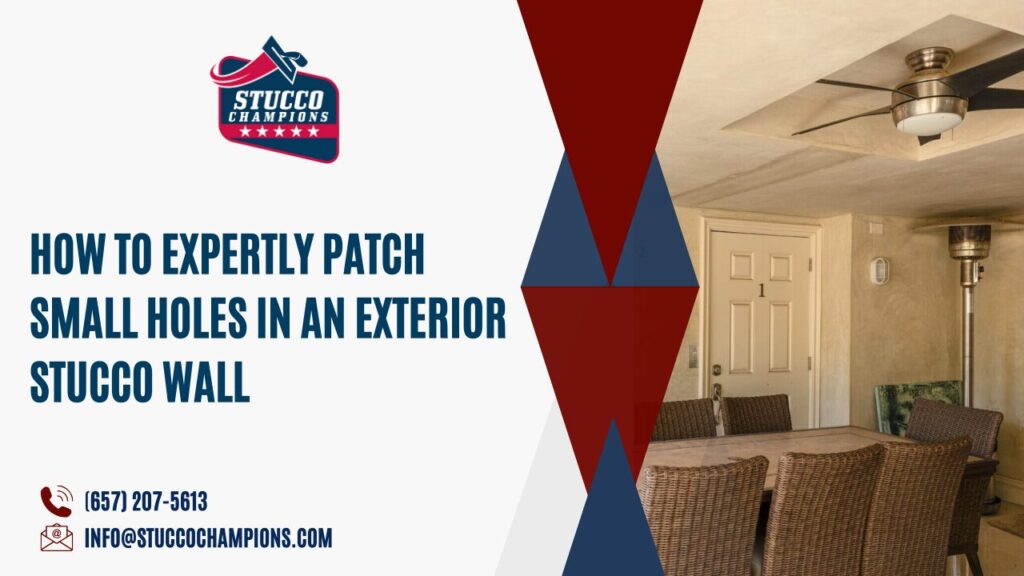Stucco, a durable and aesthetic exterior finish, is popular for its textured appearance and weather resistance. However, even the sturdiest stucco can suffer minor damage, leading to small holes that require repair. This comprehensive guide, drawing on my personal experience in stucco repair, outlines the steps to efficiently and safely patch small holes (up to 3/4 inch) in stucco walls.
Understanding Stucco and Small Repairs
Stucco, traditionally a mix of cement, lime, and sand, offers different textures and finishes. Small holes in stucco, often caused by drilling or minor impacts, can compromise the wall’s integrity if left unrepaired. This guide focuses on these small repairs, highlighting the risks, complications, and safety precautions necessary for a DIY approach.
Preparation: Safety and Cleaning
First and foremost, safety is paramount. Wear protective eyewear to prevent debris from causing eye irritation or injury. Begin by prepping the hole: clean it thoroughly using a small automotive wire brush. This step is crucial for all stucco repairs, ensuring a clean surface for better material adherence. After brushing, blow out any residual debris using compressed air, either from a compressor with an air chuck, a can of compressed air, or by blowing into the hole manually.
Step 1: Sealing the Hole
Select a high-quality polyurethane caulking, which I’ve found to be effective for its protection and durability. Apply the caulking inside the hole, ensuring it adheres to every side. Smooth it out with your finger, leaving a slight indentation for the finish material. Let the caulking dry completely, which can take between 1-24 hours depending on ambient temperature.
Step 2: Matching the Texture
Once the caulking is dry, apply a finished product to match the existing stucco texture. Options include pre-mixed acrylic-based compounds, sanded caulking, or traditional stucco finish materials. Apply a small amount with your finger, blending it into the existing finish. For most textures, a quick swipe or two suffices, especially for small holes that are generally not noticeable.
Step 3: Color Matching and Finishing
While the patched area may not be visually prominent, you might opt for a closer color match. You can either paint over the patch or use a custom color-matched finish. For a custom match, take a stucco sample from your home to a supplier. They can match and create the needed material, a process taking approximately 2-4 weeks.
Additional Tips and Considerations
- Understanding Stucco Types: Different stucco textures require specific repair approaches. Research your stucco type or consult a professional for advice on matching the texture.
- Potential Risks: Be aware of potential risks, such as moisture intrusion if the repair is not properly sealed.
- Alternative Solutions: For different scenarios, consider alternative materials like epoxy fillers for stronger repairs.
- Ongoing Maintenance: Regularly inspect stucco for cracks or holes to prevent larger issues.
Repairing small holes in stucco is a manageable DIY task when approached with the right knowledge and tools. This guide, based on personal experience, aims to provide a detailed, accurate, and safe method for such repairs, contributing valuable information to homeowners. Remember, the key to a successful repair lies in careful preparation, precise application, and understanding the nuances of stucco finishes.
By following these steps, you can ensure a seamless and durable repair, maintaining the aesthetic and structural integrity of your stucco walls.
Last week, we shared Acrylic Stucco vs. Traditional Stucco: A Comprehensive Comparison highlighting the differences in durability, appearance, and application methods. If you’re deciding which stucco type is best for your project, be sure to check out this in-depth guide!
—


